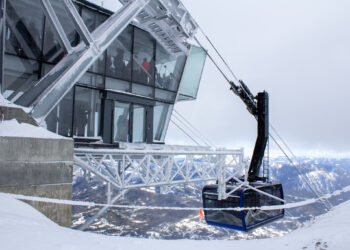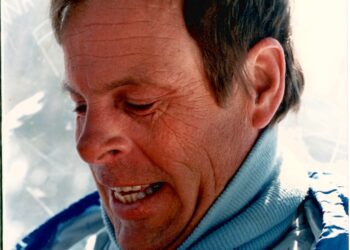By Jessianne Castle EBS Contributor
BOZEMAN – With a title like state conservationist, it’s no surprise Tom Watson cares about natural resources. Less evident, though, might be his integral role in building relationships with private landowners across Montana.
Recently assuming his position with the U.S. Department of Agriculture’s Natural Resources Conservation Service, Watson is responsible for the agency’s operations in Montana and is tasked with administering technical and financial assistance to landowners and agricultural producers in the name of conservation on private land.
By providing technical and financial assistance, the NRCS encourages voluntary conservation and landowner goals are integral to the assistance provided. An agricultural producer might be interested in anything from new strategies that improve on-farm energy efficiency or creating pollinator habitat, to regenerating soil health or partnering for conservation easements.
Prior to coming to Montana, Watson worked as an assistant state conservationist in Oregon. He has also served with NRCS as a District Conservationist in Wyoming after graduating from the University of Wyoming with a range management degree. Watson grew up on a small farm in western Nebraska and has spent his whole life connected to agriculture.
On Sept. 21, from a rest stop on his way back to Bozeman from Plentywood in the northeast corner of the state, where he had met with landowners and partners, Watson shared his insight on resource conservation with EBS.
Explore Big Sky: What brought you to Montana?
Tom Watson: I am a 29-year veteran with NRCS. I’ve spent nearly 23 years in Wyoming and I’ve worked my way up from the field. I moved to Oregon in 2012 then in early 2018, the Montana position was available. I’m a product of the West, so I feel like I have a good understanding on what challenges there are for producers and people who make a living in the West.
EBS: What do you plan to do over the next year on behalf of NRCS?
T.W.: Roll out and implementation of the new Farm Bill will be a big priority for the agency. As you know, every Farm Bill can be a bit different as Congress makes necessary changes and adjustments to farm policy and programs. Once the Farm Bill is passed, we will be moving forward to share those changes and help producers understand any differences with respect to the conservation title piece. One program change that many producers are very interested in with the new Farm Bill is what will happen to the Conservation Stewardship Program. Other producers are excited about conservation easement opportunities through the Agricultural Conservation Easement Program and new funding levels that may be coming to Montana.
EBS: What will you take from your experience in Wyoming and Oregon and apply in this state?
T.W.: I think a value in working in other states is getting to interact with producers and better understanding the challenges they face. There also is a huge benefit in terms of working with the many conservation partners across the landscape. Every state is unique but the one constant is the importance of building relationships with producers and partners based on trust.
EBS: What challenges do you think we face in Montana?
T.W.: One of the biggest challenges I see is how best do we focus our assistance where it makes the most difference? There are many challenging resource concerns across such a big state, from forest to soil to plant health, insufficient water to inefficient water use, water quality to wildlife habitat.
EBS: In your experience, what have you found to be the most effective tool for working with landowners?
T.W.: I think a couple of tools I’ve found are tried-and-true in what the agency believes in: to provide science-based information and provide conservation alternatives. Every producer knows what would work for them, not everything we do is something producers can or are willing to do at that time. We let them make that decision and be in the driver’s seat for voluntary conservation. That allows them to also have that trust when you’re not put into that regulatory mode. It’s a huge difference on the voluntary side versus the regulatory side.
EBS: Where do you see NRCS in Montana in five years?
T.W.: Really focusing on providing our financial and technical assistance in places that make a difference. I really see us trying to focus on what the resource concerns are that impact communities and what outcomes they are looking for. How can we best treat a landscape that creates that outcome and moves the proverbial needle? It takes partners to come to the table and want to work and leverage money and technical assistance with the NRCS, and obviously it takes ready and willing producers to consider how we best make a difference on the landscape.
Visit mt.nrcs.usda.gov to learn more about programs offered by NRCS.














